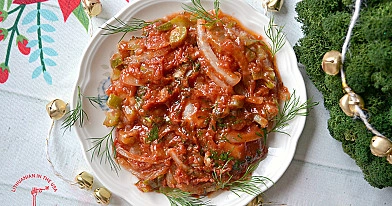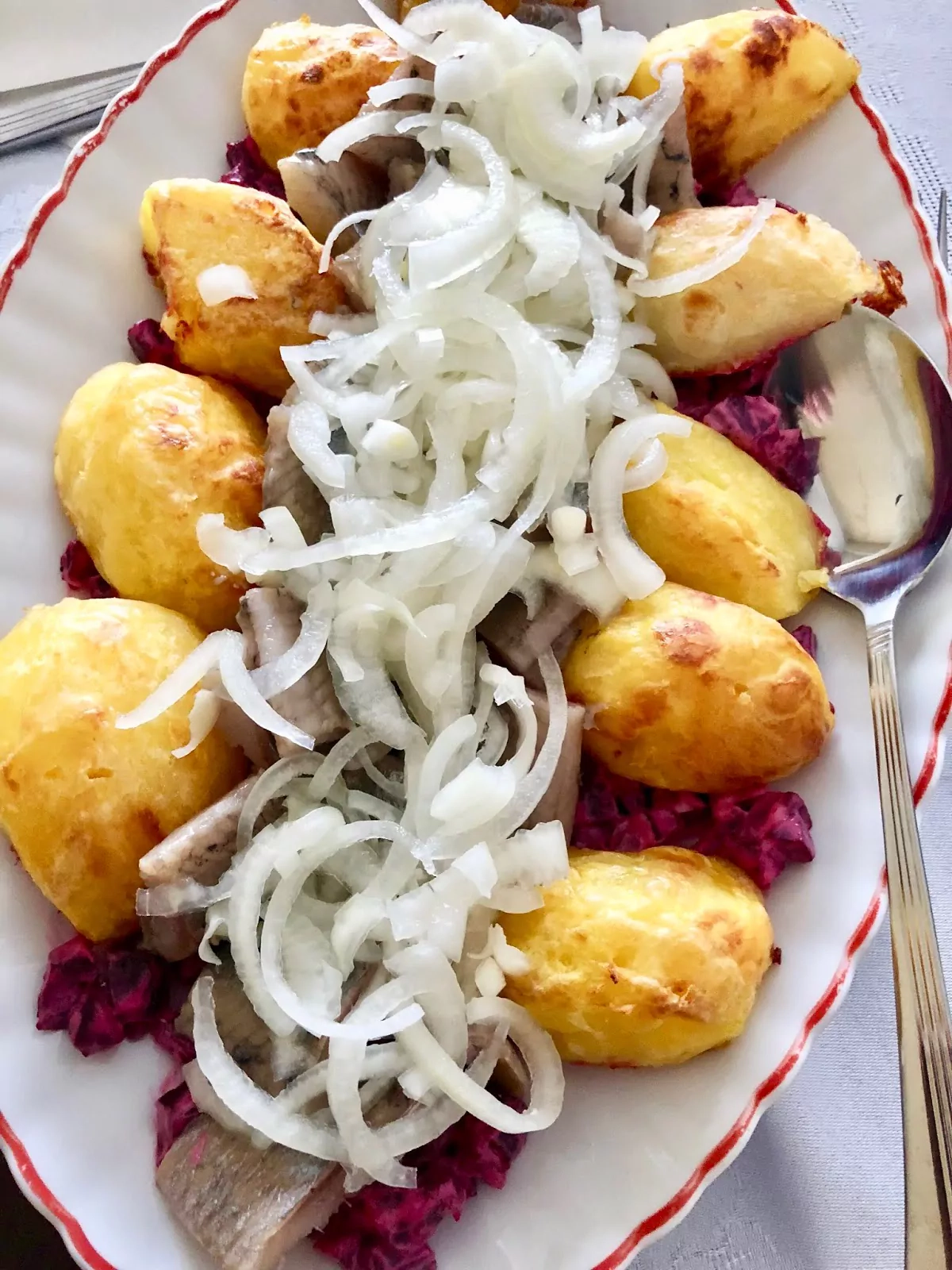
Dutch matjes herring with beetroot, apples and potatoes

It's hard to imagine a Christmas table without herring - most housewives prepare it according to their own recipes, often inherited from their mothers or grandmothers. To add variety to the traditional dishes, you can try something new, such as the special Matjes herring, which will surprise you with a different taste and a very delicate texture.
Matjes is a young, "innocent" herring caught in the North Sea. It is caught in the first year of its life, when it has not yet developed its roe and milt. They are still white, young and immature.
Matjes herring is a very high-fat fish, typically around 23% fat, and a wonderful source of omega-3 fatty acids. This fat content decreases as the herring begins to mature, with the more common herring, usually caught in the 2nd or 3rd year of its life, having a fat content of just 15 percent.
Matjes herring is fresh, never frozen before, and is not for sale. As soon as it is caught, it is covered with a salt brine of sea water and frozen, which is compulsory in order to kill various bacteria. Herring frozen in this way can be kept for a whole year.
Once it is thawed, it is ready to eat - Dutch people usually buy herring in buckets of 5-10 kilos and finish the fish themselves at home. Those who are too lazy or unwilling to do so stop for a taste of Matjes at the street stalls, which are plentiful in Dutch cities. And you don't have to wait for a holiday to get there.
Dutch people don't usually serve Matjes herring with any salad, nor do they hide it under any other condiments - they eat it whole, just rolled in chopped onions, sometimes with a bite of black bread and/or a pickle. The Germans, who are also big fans of herring, often eat it stuffed in a bun, and some make Matjes herring tartare or other more elaborate snacks. And this time it's my much-loved, unusual herring dish, which is very tasty!
Matjes is a young, "innocent" herring caught in the North Sea. It is caught in the first year of its life, when it has not yet developed its roe and milt. They are still white, young and immature.
Matjes herring is a very high-fat fish, typically around 23% fat, and a wonderful source of omega-3 fatty acids. This fat content decreases as the herring begins to mature, with the more common herring, usually caught in the 2nd or 3rd year of its life, having a fat content of just 15 percent.
Matjes herring is fresh, never frozen before, and is not for sale. As soon as it is caught, it is covered with a salt brine of sea water and frozen, which is compulsory in order to kill various bacteria. Herring frozen in this way can be kept for a whole year.
Once it is thawed, it is ready to eat - Dutch people usually buy herring in buckets of 5-10 kilos and finish the fish themselves at home. Those who are too lazy or unwilling to do so stop for a taste of Matjes at the street stalls, which are plentiful in Dutch cities. And you don't have to wait for a holiday to get there.
Dutch people don't usually serve Matjes herring with any salad, nor do they hide it under any other condiments - they eat it whole, just rolled in chopped onions, sometimes with a bite of black bread and/or a pickle. The Germans, who are also big fans of herring, often eat it stuffed in a bun, and some make Matjes herring tartare or other more elaborate snacks. And this time it's my much-loved, unusual herring dish, which is very tasty!
Ingredients
- matjes herring
- fried boiled potatoes
- pickles
- pickled onions
- 2 apples
- cranberries: 30 grams
- brown sugar: 30 grams
- cinnamon
- cooked beetroot: 1
- mayonnaise: 100 grams
- white pepper
- 1. First for the beetroot mayonnaise, mash the cooked beetroot, add the mayonnaise and season with pepper and stir.
- 2. For the apple-cranberry cream, peel and slice the apples, put them in a saucepan with a little water, add the cranberries, sugar and cinnamon. Boil a little to boil off the liquid, then mash until smooth.
- 3. Spread beetroot mayonnaise on the plate where you will serve the herring, place the potato halves (or slices), which have been boiled and baked, on top of the herring fillets, on top of the herring, the pickles, sliced and cut into cucumbers and spring onions, and then serve the apple-cranberry cream on the side. Enjoy!
- 4. Sighting: I found a similar recipe on YouTube (in English) that our family liked. If you are interested in making it yourself, I have attached the video at the end of the post.
Recipe Directions
